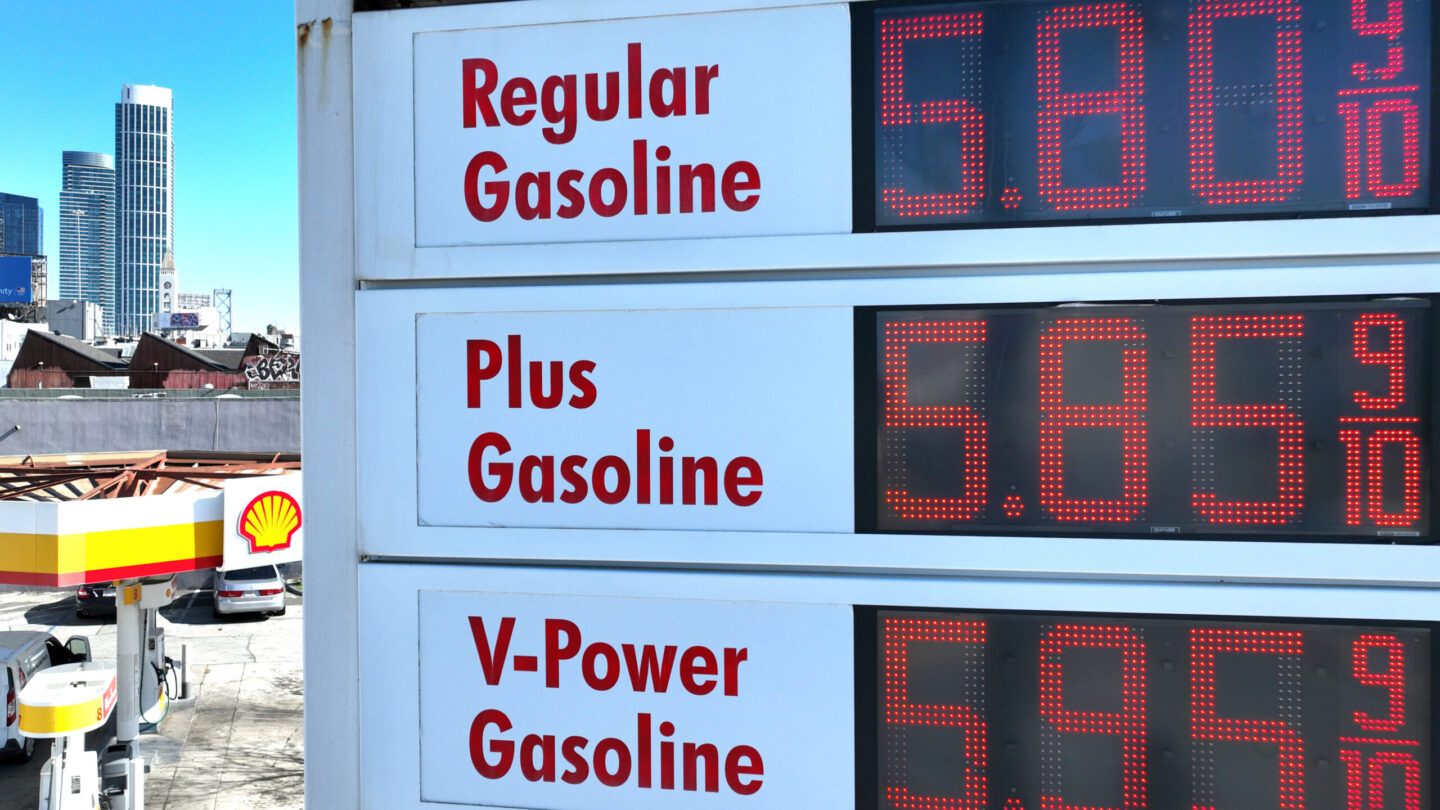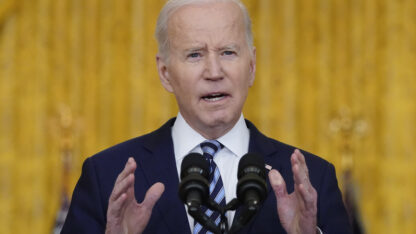Global oil prices rose to above $100 a barrel on Thursday after Russia launched an invasion of Ukraine, hitting triple digits for the first time since 2014.
Energy prices were already relatively high before this crisis, as production has not kept pace with surging demand from a global economy that is recovering from the pandemic.
Russia’s missile strikes on cities across Ukraine, including the capital of Kyiv, have raised those prices even further, which is bound to reinforce fears about inflation.
Brent crude — the global benchmark for oil prices — went as high as $105.79 for the front-month contract.
Natural gas prices also climbed; in Europe, natural gas prices were up by 30%.
Russia is one of the world’s top producers and exporters of crude oil and natural gas. Investors fear that some exports could be disrupted by conflict on the ground, while others could be blocked by sanctions, or shut down by Russia as a strategic move against Europe.
The U.S. has not yet issued direct sanctions against Russia’s oil and gas exports, but acknowledged that other sanctions on Russia will affect global energy supplies and prices.
“Defending freedom will have costs,” President Biden said in a speech this week, while also vowing to protect Americans from feeling too much pain at the gas pump.
Surging oil prices come at a time of high inflation
The surge in crude prices is likely to lead to higher gasoline prices – just as the U.S. is suffering its highest inflation level in four decades.
The rising gasoline prices will likely contribute to higher inflation in the short term, hurting the pocketbooks of many people. Rising transportation and production costs could also make goods more expensive.
There are other impacts. A sharp climb in the price of crude will benefit oil producers, while creating complex repercussions for international relations and the fight against climate change.
This is the first time crude prices have gone above $100 since 2014.
Brent crude hit an all-time peak in July 2008, passing $147 a barrel before crashing later that year. Between 2011 and 2014, prices were sustained above $100 for prolonged periods of time.
Oil markets are closely watching for any major shifts that could push prices back down — including a remarkable de-escalation of tensions in Ukraine or a new coronavirus variant that could push down global demand.
But the most likely source of near-term price relief would be any news of a new nuclear deal with Iran, a major oil producer currently under U.S. sanctions.
Clinching a deal would potential bring significant quantities of crude oil into global markets, reducing concerns about supply.
Copyright 2022 NPR. To see more, visit https://www.npr.org.
9(MDAxODM0MDY4MDEyMTY4NDA3MzI3YjkzMw004))

9(MDAxODM0MDY4MDEyMTY4NDA3MzI3YjkzMw004))








